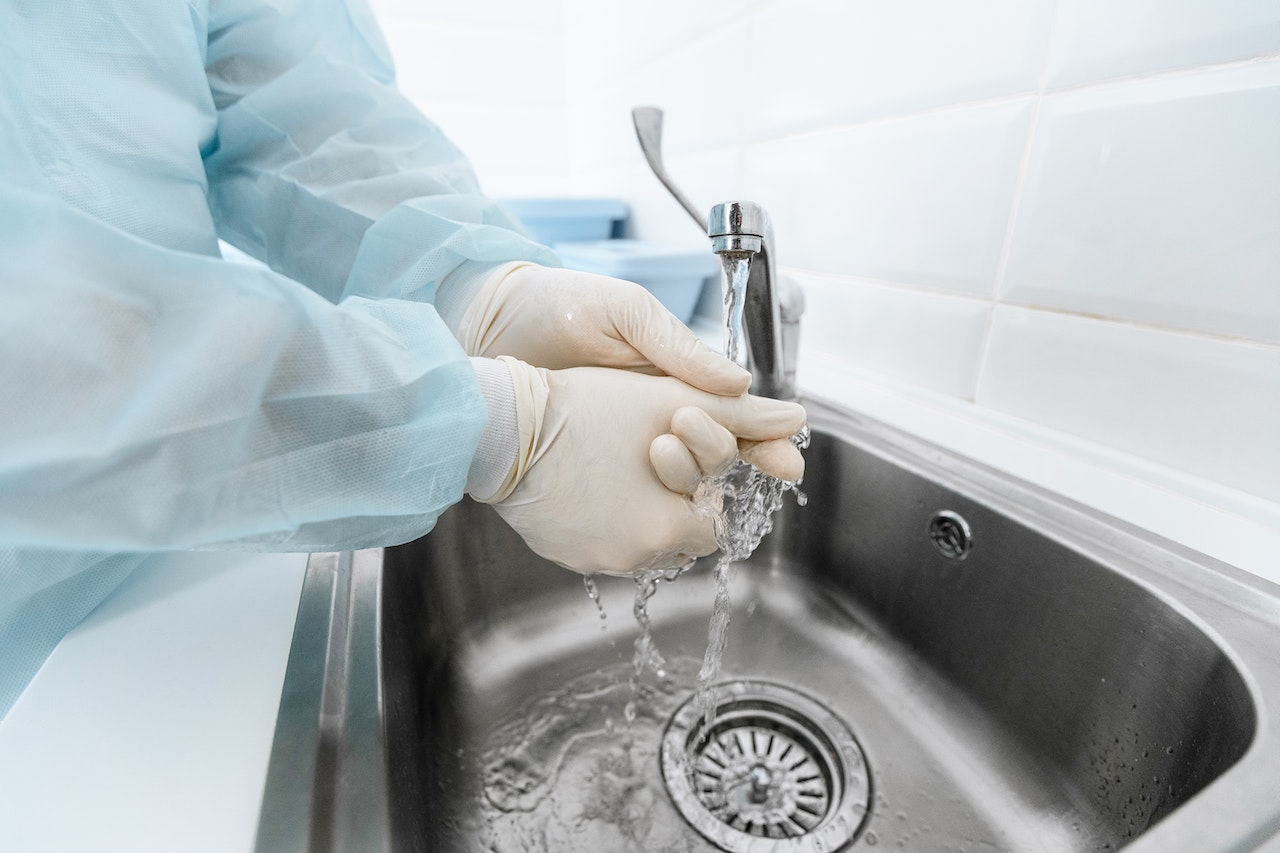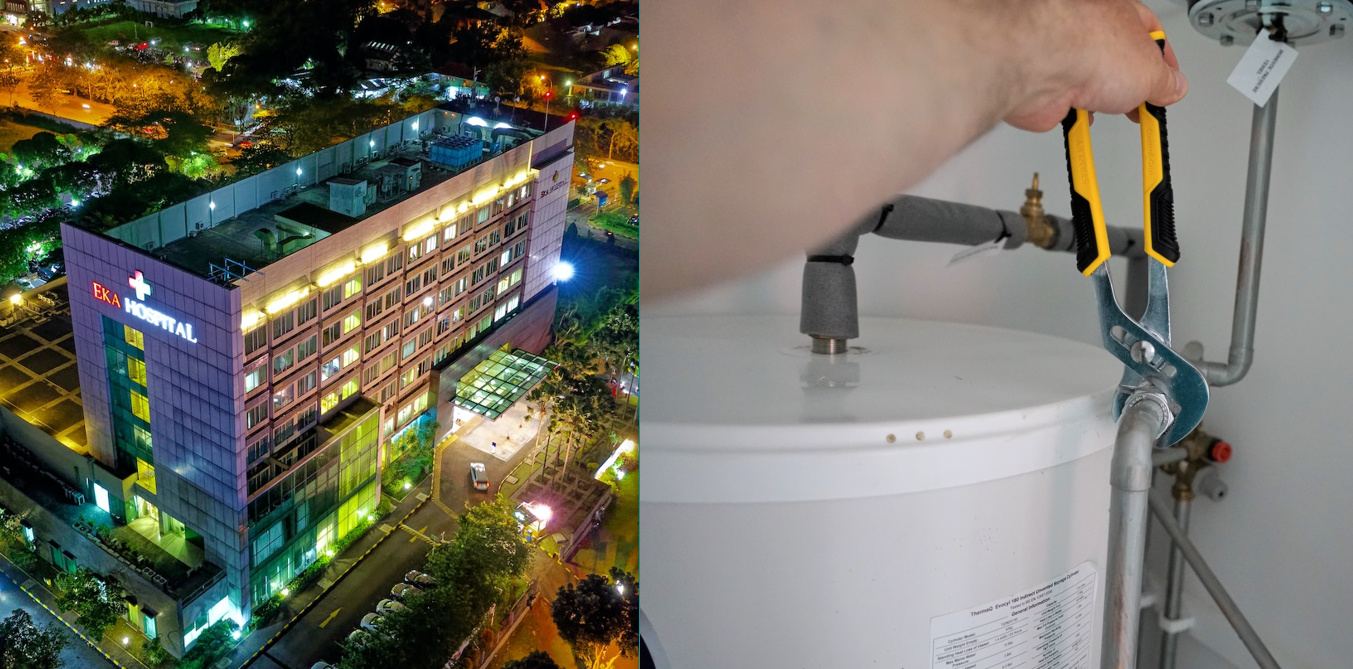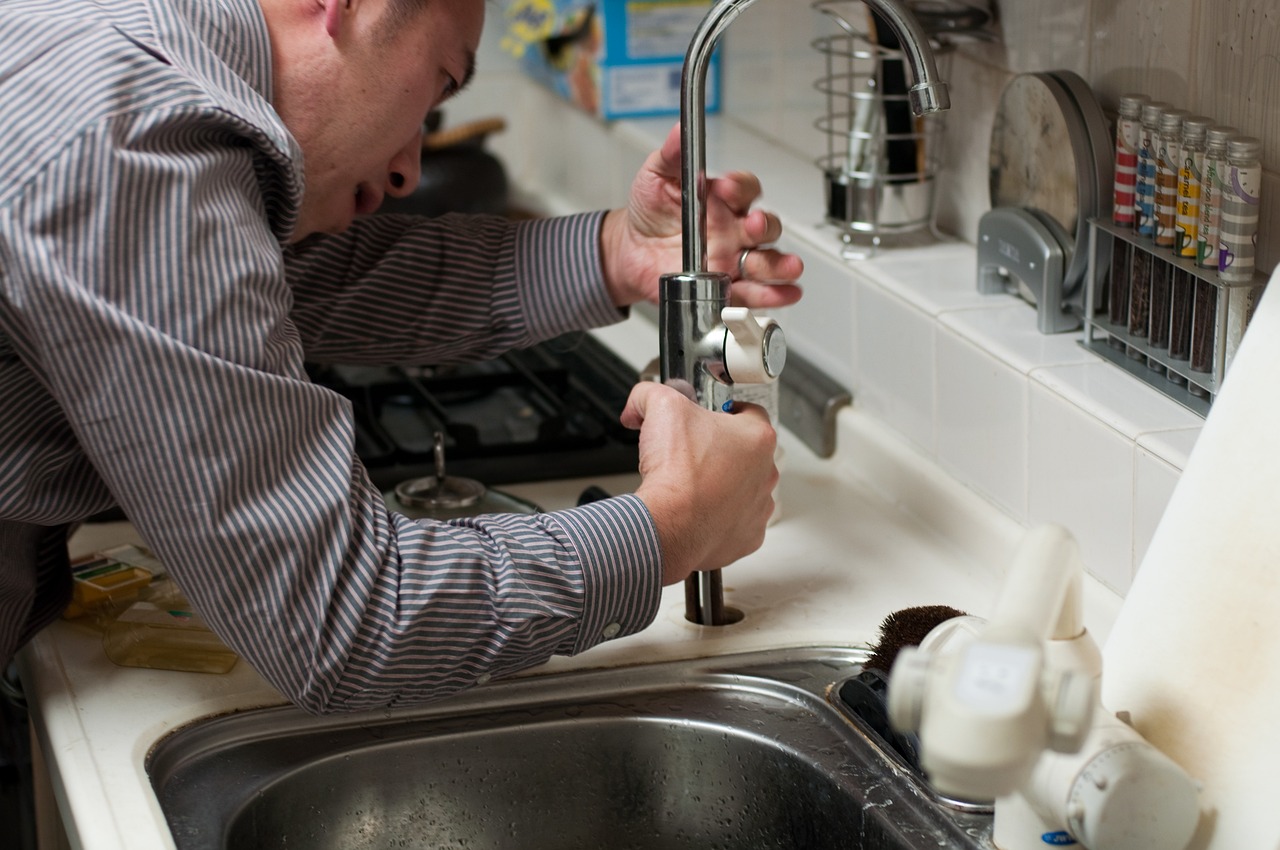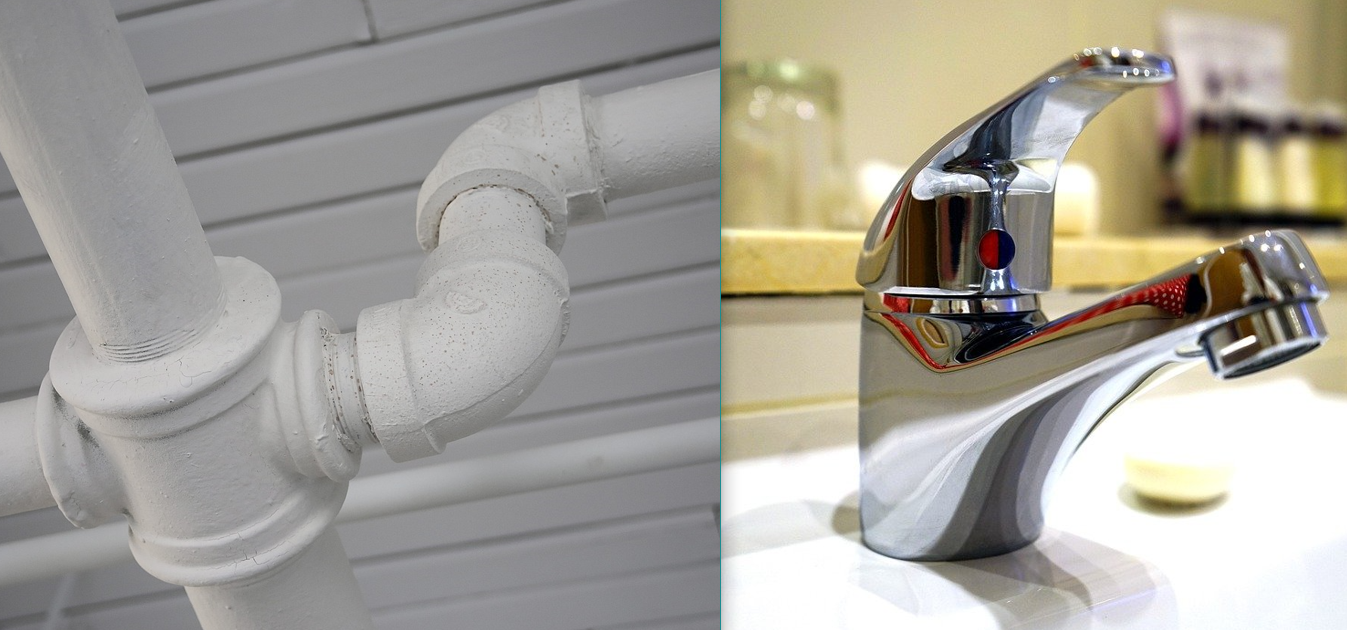Healthcare Puts Demands On Fixtures - Placing Premium On Plumbing
When healthcare puts demands on fixtures, it’s a sign that hospitals are serious with its fundamental mission of providing a healthy environment for both their personnel and patients. The plumbing needs of a hospital is big. For one, it installed a lot of faucets as it needs water for its daily operations. It’s a must to go for first-rate plumbing.
George EvansOct 12, 2022107 Shares1427 Views

A safe, reliable water-delivery system is crucial to the operation of the more than 500,000 healthcare facilities serving nearly 136 million people throughout the U.S.
Plumbing design, engineering, and product specification are critical factors in building or renovating any facility.
One of the most important considerations in choosing plumbing products for the healthcare environment is durability.
Constant use, exposure to harsh chemicals, and the need to be germ free make chromium-plated faucets and fixtures the optimum choice for a healthcare setting.
The chrome finish is rust resistant, makes cleaning easy, and can be covered with an anti-microbial coating to offer an extra layer of protection from germs.
Controlled water flow is another area of significant concern.
Turbulent-flow faucets create over splash and dangerous situations such as spills or accumulated water on the floor - a serious hazard for anyone, but especially for those with physical handicaps.
Choosing laminar-flow faucets will prevent spillage that could cause slips and falls, as well as reduce maintenance and clean up.
Contamination of potable water supplies is a very real possibility in a healthcare environment.
Drugs or chemicals accidentally introduced through a cross-connection or backflow could have a devastating impact.
To prevent this, all faucets in vulnerable areas should be connected to an appropriate check valve or vacuum breaker, and all inlets operating below the water line, all faucets with hose adapters, and all flush valves should be equipped with vacuum breakers.
Backflow preventers should be installed at every location in which the potable water supply should be protected from contamination.
In addition, all water spigots used in lavatories and sinks should have clearances sufficient to avoid contaminating utensils.
Although healthcare facilities are exempt from most water and energy-conservation regulations, all products coming in contact with potable water should be lead free and in compliance with the guidelines stipulated in the Reduction of Lead in Drinking Water Act, which went into effect in 2014.
Healthcare fixtures should also be in compliance with the Americans with Disabilities Act (ADA) guidelines.
Hospitals and similar care facilities try their best to comply as healthcare puts demands on fixtures.
Generally speaking, all valves should offer easy, hands-free operation, using wrist blades, foot controls, or electronic sensors.

How To Maintain Drains At A Massive Hospital
Areas Of Concern
When healthcare puts demands on fixtures, several areas in a hospital come to the attention of regulators as well as plumbers.
While healthcare facilities in general will share many common needs, areas designated for particular types of care may require very specific needs.
Here are a few of those situations.
Patient Care Areas
This area typically includes a restroom with a water closet, lavatory, and a shower or tub. Plumbing products used here should be designed for convenience as well as durability:
Ceramic cartridges
These allow exceptional ease of use, important because patients may have a wide range of limitations and physical handicaps. Ceramic cartridges also provide easy control of water flow rates.
Lavatory faucets
Ideally, these should have a gooseneck spout with wrist-blade handles. For more convenience and improved hygiene, the design can incorporate electronic or hands-free controls.
Shower valves. In the interest of safety and the prevention of accidental scalding, shower valves should automatically compensate for variations in water supply pressure and temperature.
Bed-pan washer
These convenient faucets can be placed in patient restrooms. The patientcare area could also have a clinical-service sink faucet. Check to see if local codes require your facility to have these in place.
Nurseries
Nursery lavatories should have hands-free controls and a high gooseneck spout. This adds safety and convenience to the neo-natal environment.
An optional choice for this area would be filler spouts with separate hand-valve controls.
Food Service Areas
In many healthcare facilities, food preparation generates much activity and occupies extensive space.
No wonder healthcare puts demands on fixtures. Food can easily get contaminated.
Ongoing use of cleansers, disinfectants, and pesticides mandates highly durable equipment, and, because of the many different tasks involved in a food service operation, some very specific products are necessary to keep this area sanitary and efficient:
Pre-rinse units
Pre-rinse sprayers have proven to be efficient and durable. The selection of a particular model depends on its intended use.
For instance, a spring-arm sprayer can provide quick rinsing in a large-volume environment, while the newer low-flow, high-efficiency spray valves save water and energy.
Pot and glass fillers
Pot and kettle fillers that swing out over burners can offer extra convenience and efficiency. Additional pre-rinse units can also be used as pot fillers.
Restaurant-style, push-back glass fillers also add convenience to any beverage serving station.
Retractable hose reels and accessories
Retractable hose reels provide convenient access for cleaning in the food-service area, but keep hoses out of the way during food preparation.
Several different types of sprayer attachments can provide adjustable streams, from solid to soft spray. Swivel brackets allow ease of use but keep the reel tucked away when it’s not needed.
Hand-wash faucets
Because of their extended daily use, faucets used for hand washing in the food service area should be convenient and durable.
They should conserve water and reduce the spread of disease.
These faucets can be either manual or electronic-sensor operated, with sensor models being the best choice because of their hands-free functionality and subsequent inhibition of the spread of germs.
It could be costly when healthcare puts demands on fixtures, but it would all be worth it.

Environmental Services
Housekeeping and facility maintenance in a hospital require the use of many different cleaners, disinfectants, and treatments.
Faucets and components used by the maintenance staff should be durable enough to withstand these harsh conditions.
As healthcare puts demands on fixtures, faucets should not be forgotten on the list.
Service/mop-sink faucets
Typically found in the janitor’s closet, a service sink is designed to withstand heavy use and abuse.
The often-overlooked faucet receives just as much abuse.
A properly installed wall brace will improve durability. These faucets also should provide the highest flow rate possible to facilitate productivity.
Laboratory Services
The laboratory provides daily medical and diagnostic testing for the healthcare environment.
When healthcare puts demands on fixtures, those found in labs should therefore be also checked.
Maintaining a sterile environment is the primary concern in the lab, regardless of healthcare-facility size.
There may be a wide range of disinfecting solutions used in the lab. The faucets and other important accessories should be able to withstand these harsh chemicals.
Laboratory faucets
Faucets used in the lab should support the diagnostic testing processes by providing controlled flow rates.
Serrated tips on the faucets provide convenient hose attachment.
Gas cocks with turrets
In most laboratory environments, it is necessary to control the supply of gasses and air in testing.
The gas cocks and turrets allow safe control of gas and air to maintain the accuracy of diagnostic results.
Aspirators
In some testing procedures, it is necessary to mix other fluids with water.
Aspirators are used on the end of a faucet spout to create a vacuum and allow other fluids to be introduced into the water stream.
Fume-hood fittings
Fume hoods can be fitted with outlets for gas, air, and water.
In most instances, the flow of these elements is controlled by a remote valve mounted on the front or inner wall of the fume hood.
Surgical Services
This area includes anesthesia, pre-operative services, surgery, and post-anesthesia care.
While there are typically no plumbing fixtures in the operating room, there are two rooms immediately adjacent to the operating room where faucet selection is very important.
Hands-free scrubbing
The scrubbing room usually provides at least two stainless-steel scrub sinks, complete with hands-free faucets.
A foot/knee pedal or sensor faucet affords medical staff the convenience of hands-free washing while conserving water.
This area could also use a tall gooseneck spout for added convenience and laminar flow for safety.
Workroom faucet
As earlier mentioned, when healthcare puts demands on fixtures, the faucets should be checked well.
The workroom is designed for the exclusive use of the surgical staff. It is intended to be different from the scrubbing station.
This room contains a clinical sink and the appropriate accessories, including a bed-pan washer and a separate wall-mounted faucet.
Autopsy room
The requirements of the autopsy room may vary depending on the needs of the hospital.
The plumbing in this room typically provides cold and hot water, with a vacuum breaker or backflow preventer.
It is most important for the plumbing designer to consult with the manufacturer of the autopsy table to determine the requirements for the table. Body flushers and hose reels used in this room need to be designed for pressure control and maintenance.
The autopsy room should also be equipped with a stainless-steel sink, complete with a manual faucet or sensor faucet with a gooseneck spout.
Cross-Connection And Backflow Contamination
Within the hospital water-delivery system, there may be points where non-potable water is connected to potable sources.
These cross-connections can potentially allow a backflow of non-potable water to contaminate the potable sources. As healthcare puts demands on fixtures, connections should be double-checked.
Backflow often occurs because of increased pressure from a non-potable source.
The dangers posed by backflow can be reduced by preventive measures such as installing backflow-prevention devices.
To prevent future incidents, the healthcare facility maintenance staff should also flush and clean the water-distribution system after an incident.
For many of these applications, additional protection can be provided by specifying a factory-applied antimicrobial coating for the fixtures.
The clear, fingerprint-resistant finish reduces the growth of microbes such as bacteria, molds, mildew, and fungi.
Final Thoughts
We look to healthcare facilities as a place of healing.
That’s why when healthcare puts demands on fixtures, it will involve a lot of areas in a hospital.
To guarantee that hospitals, trauma centers, labs, assisted-living units, and doctors’ offices are as germ-free as possible, installing approved, appropriate plumbing fixtures is an essential best practice.
Whether building from the ground up, renovating, or retrofitting, make sure the plumbing fixtures you specify are designed for safe, efficient performance.
It will create additional expenses on the part of hospitals when healthcare puts demands on fixtures, but the welfare and safety of both and workers are priceless.
Latest Articles
Popular Articles

